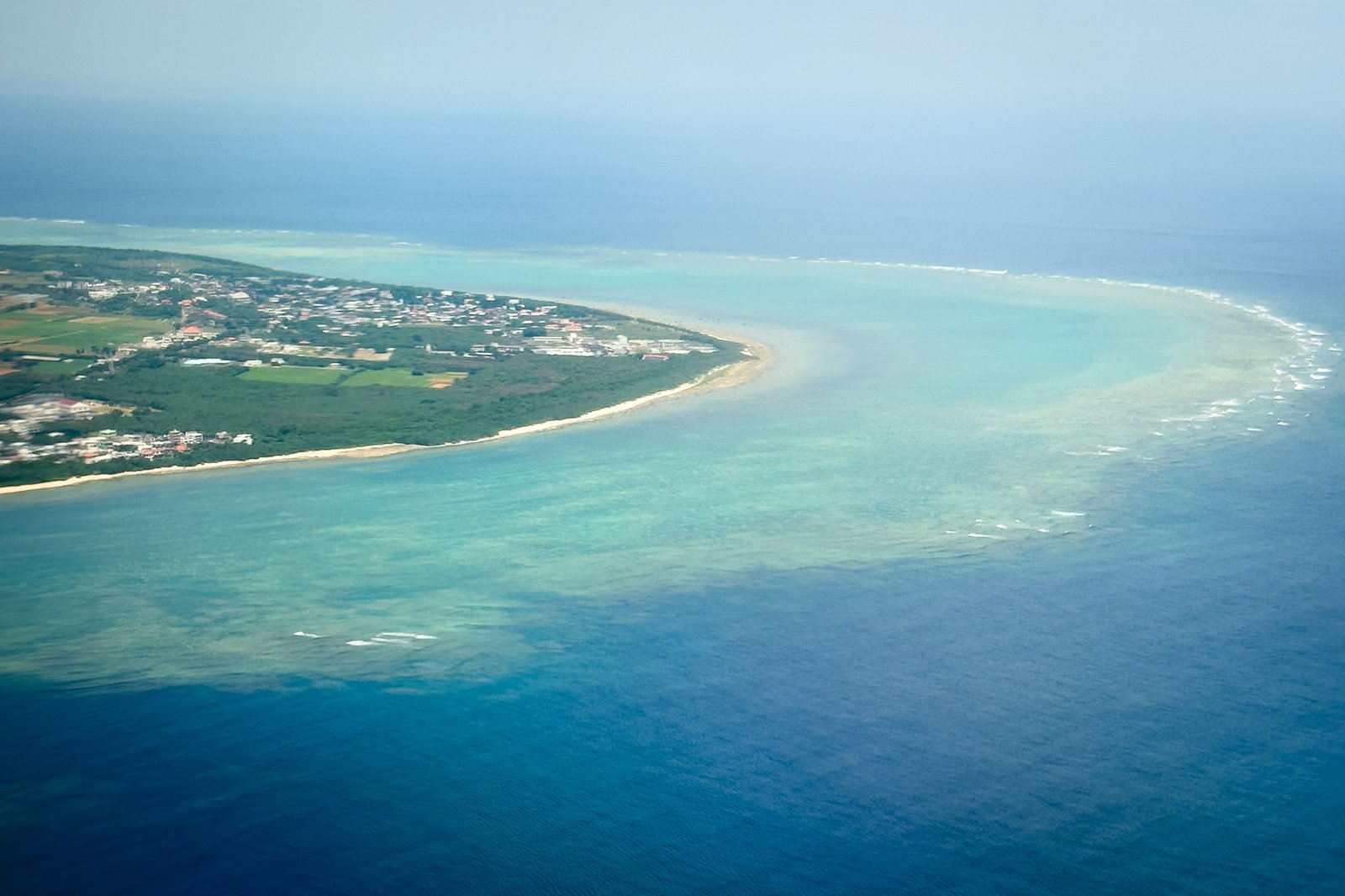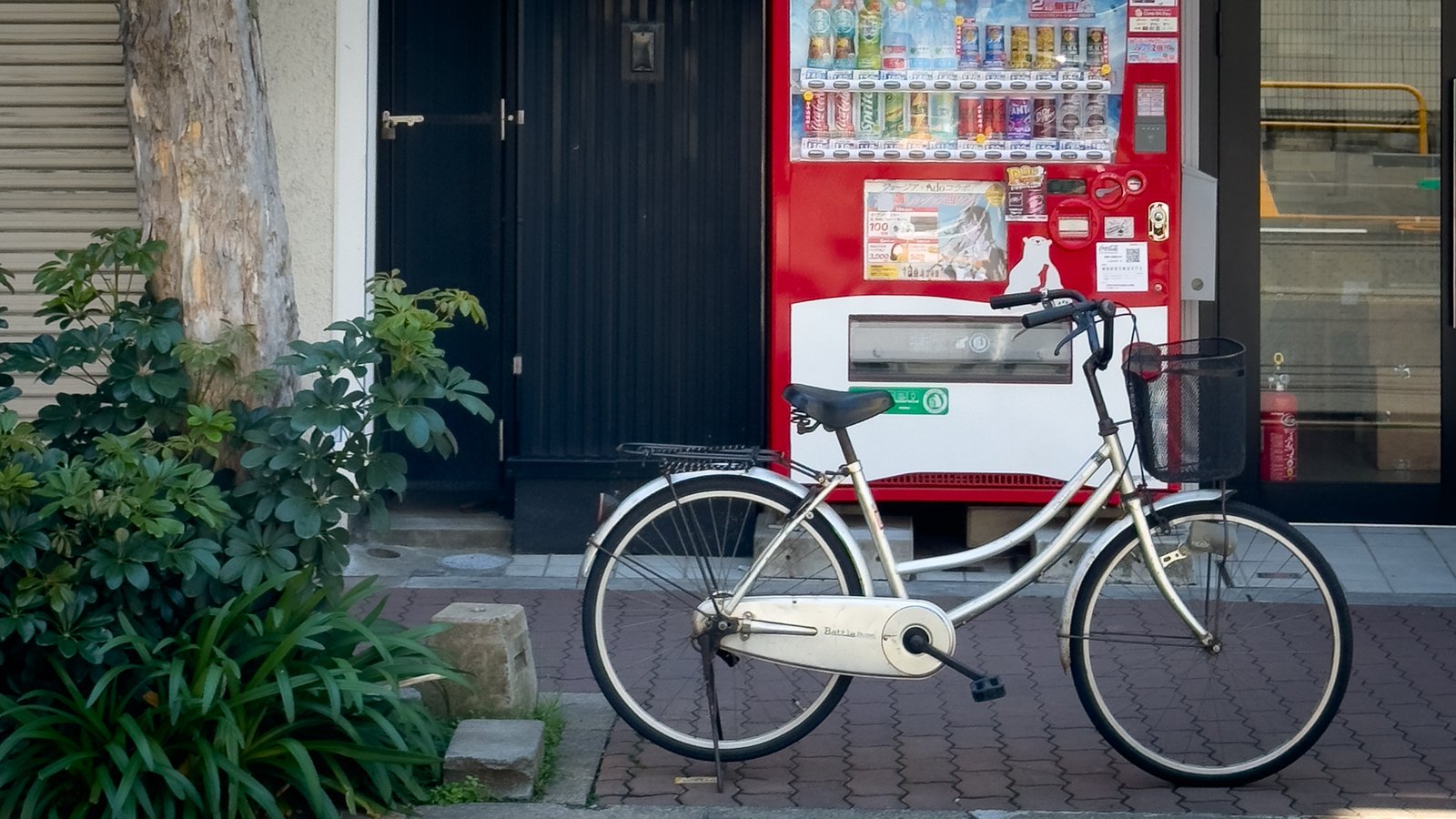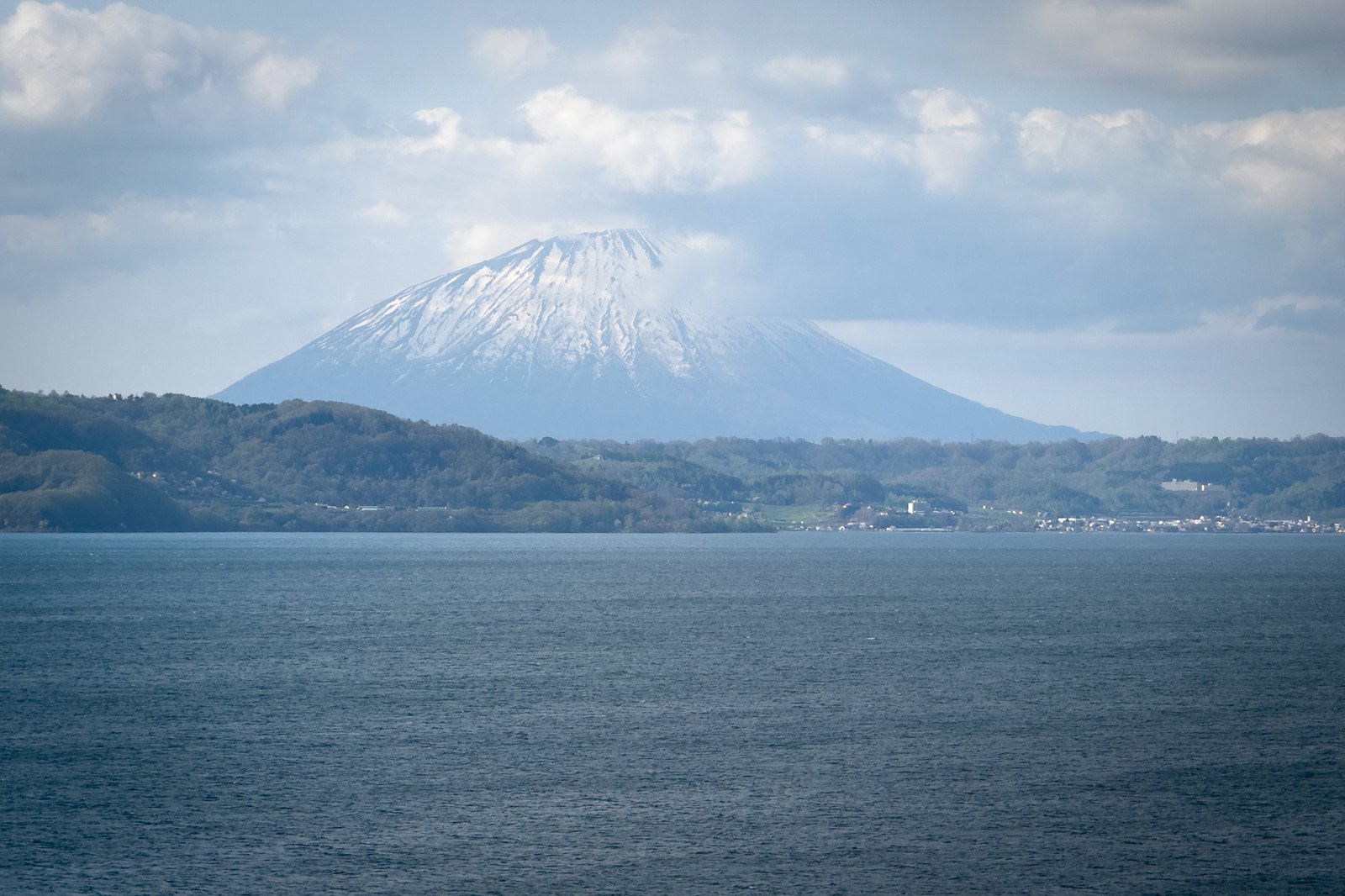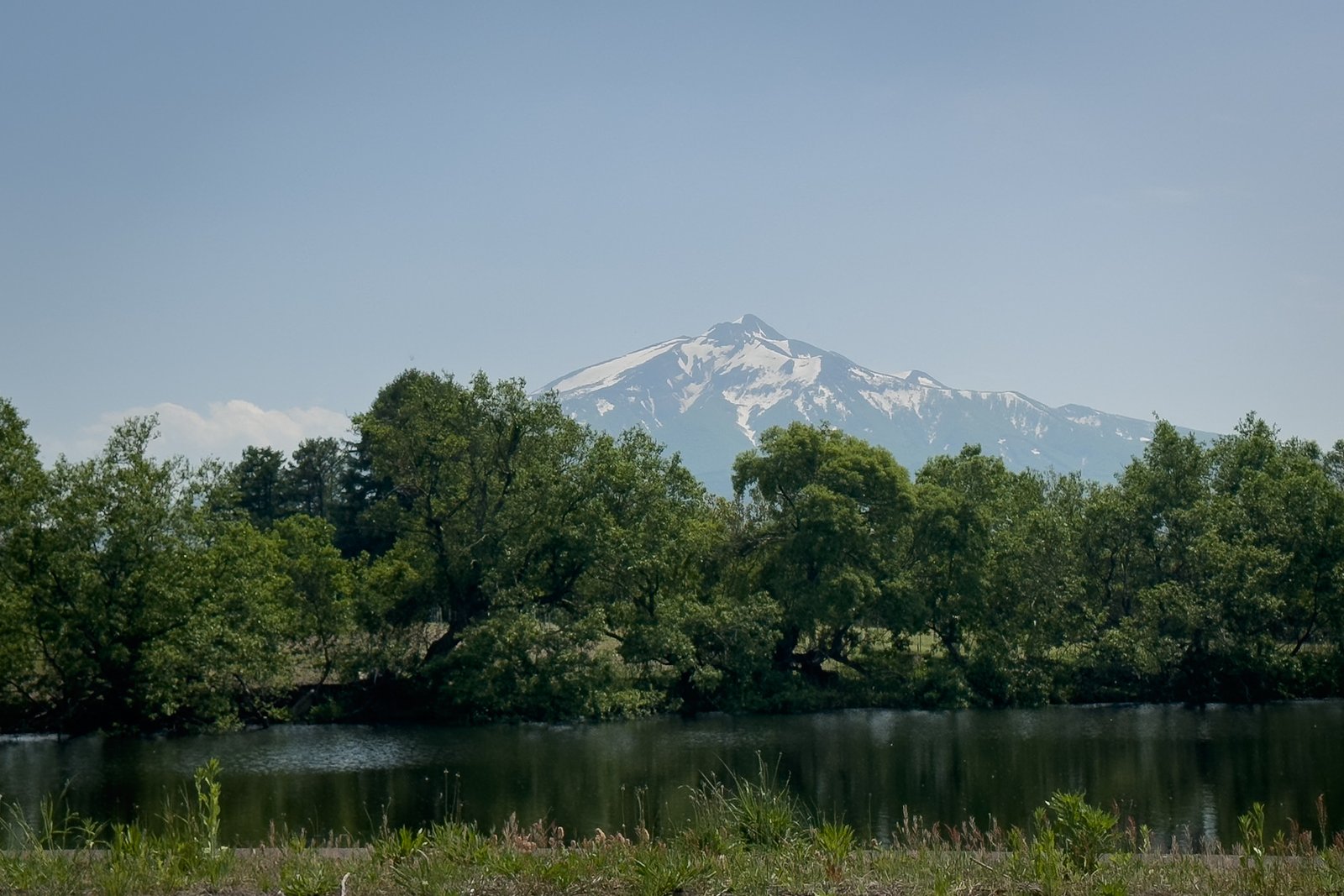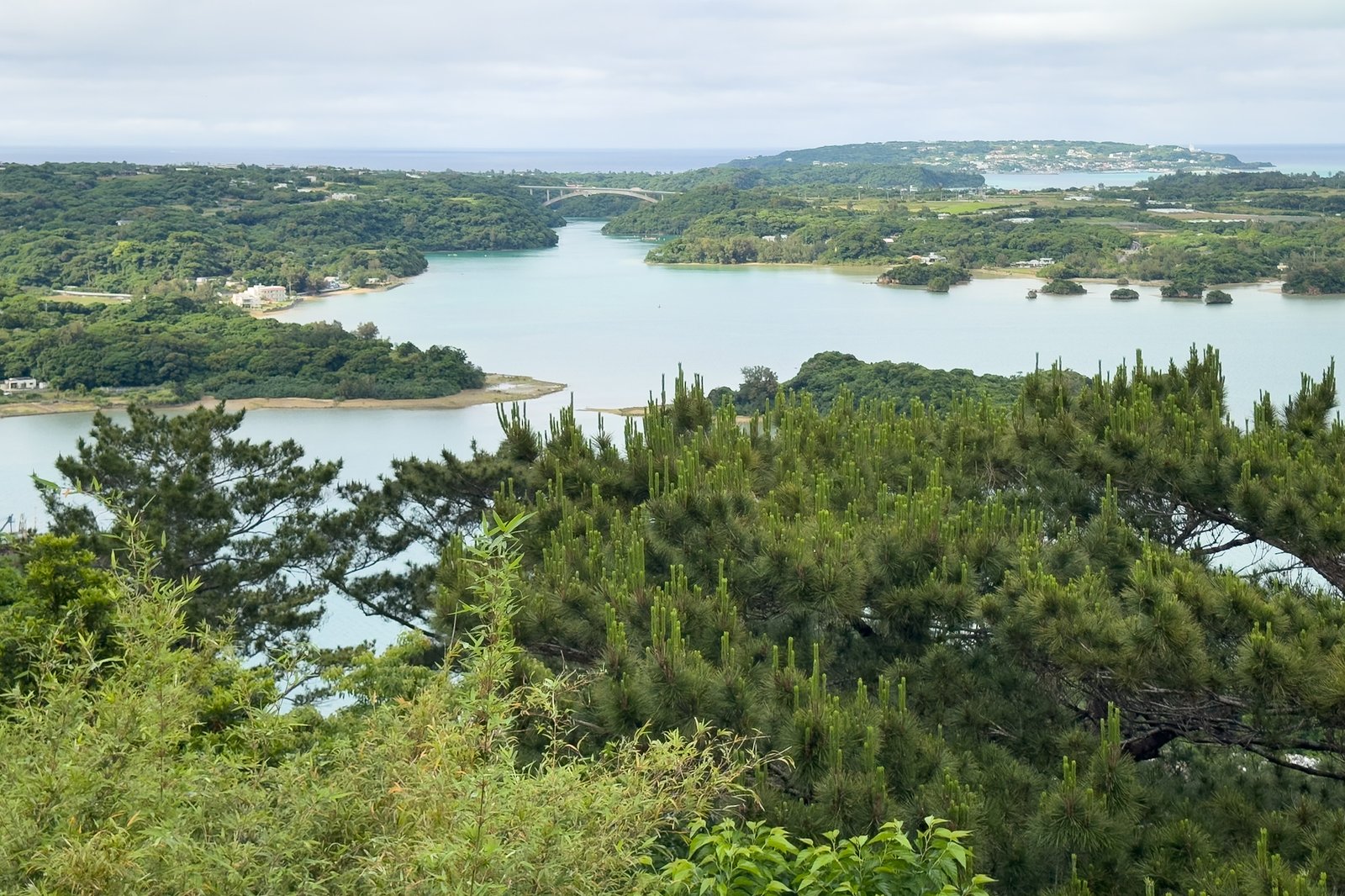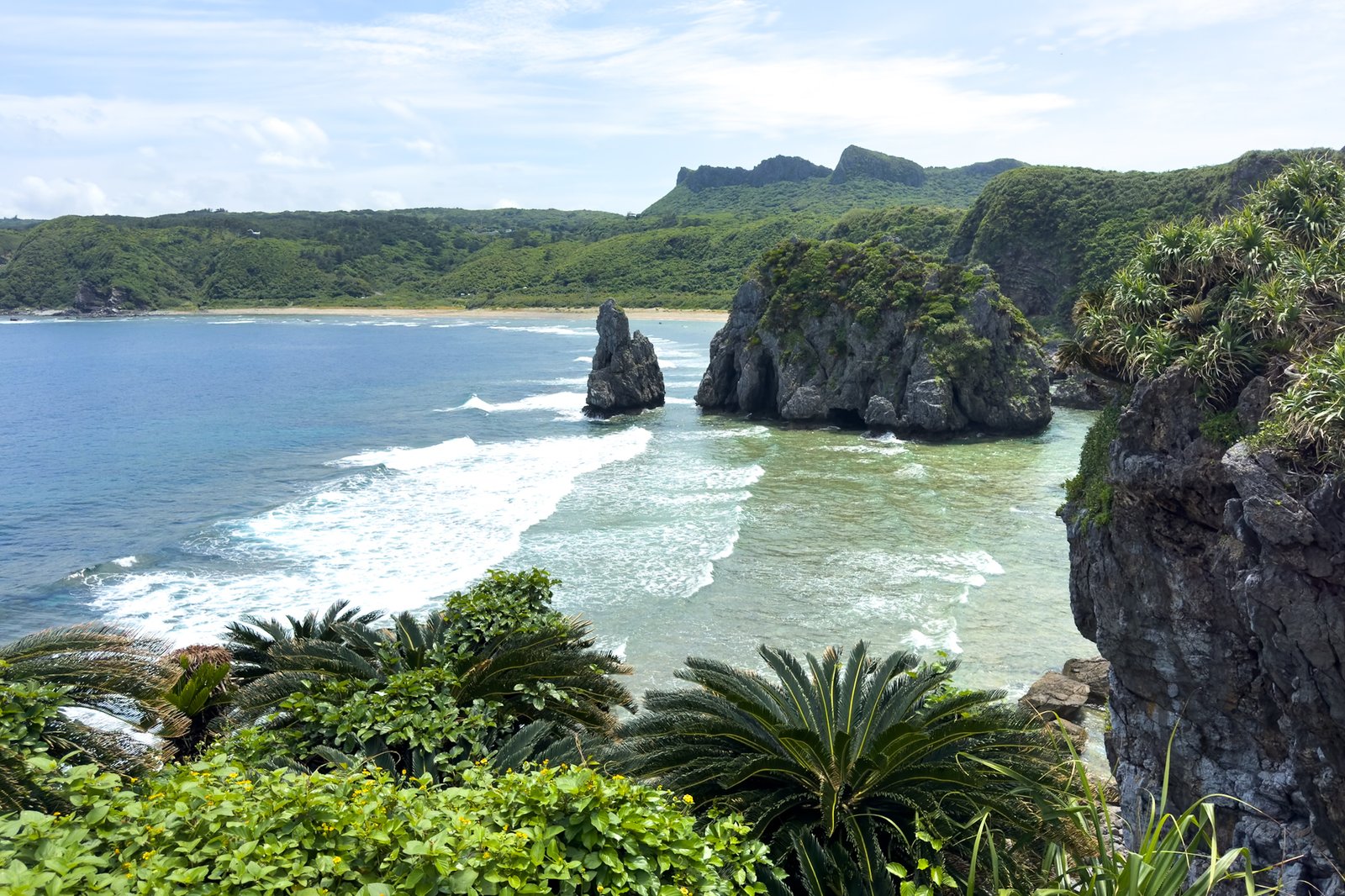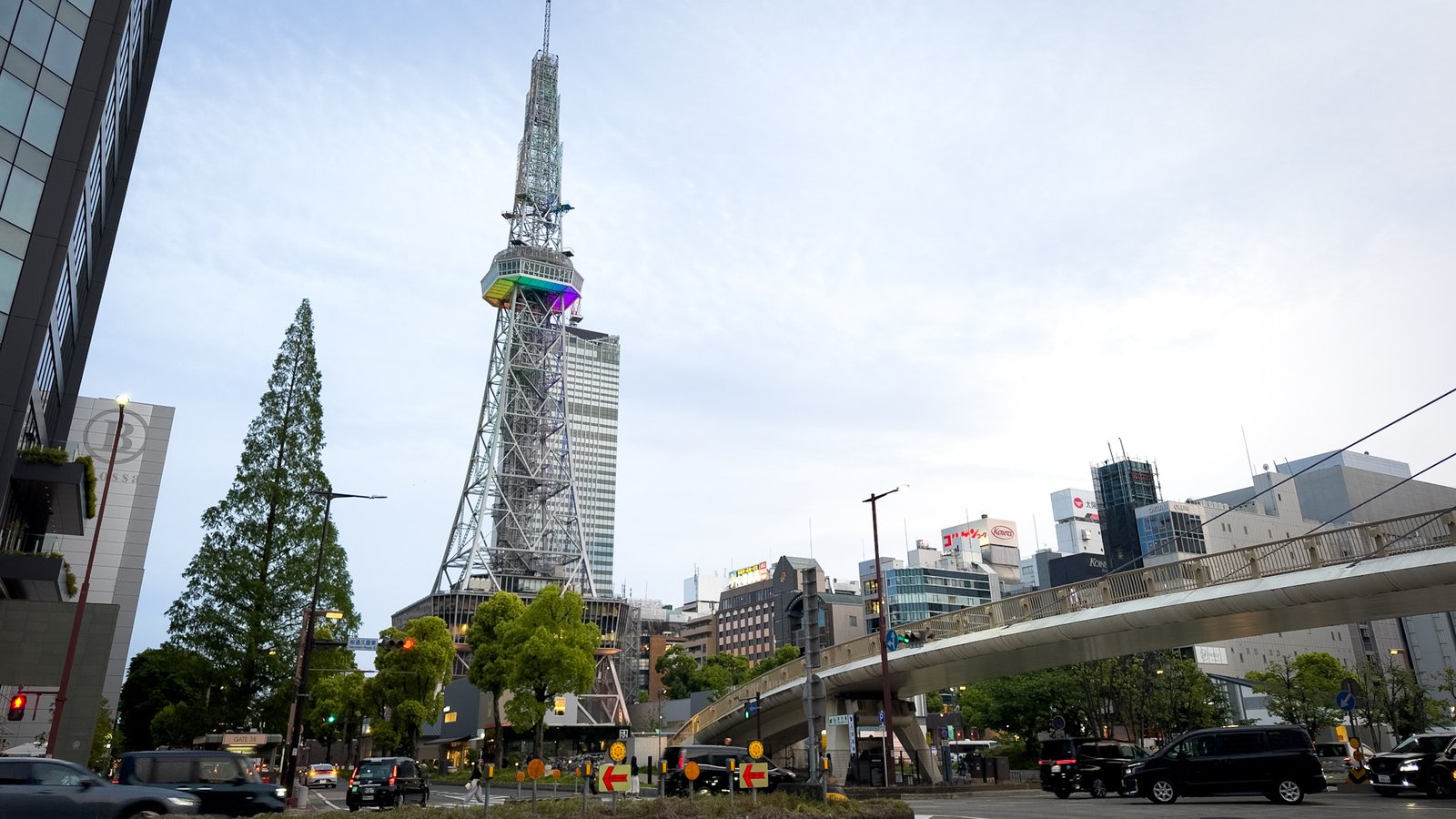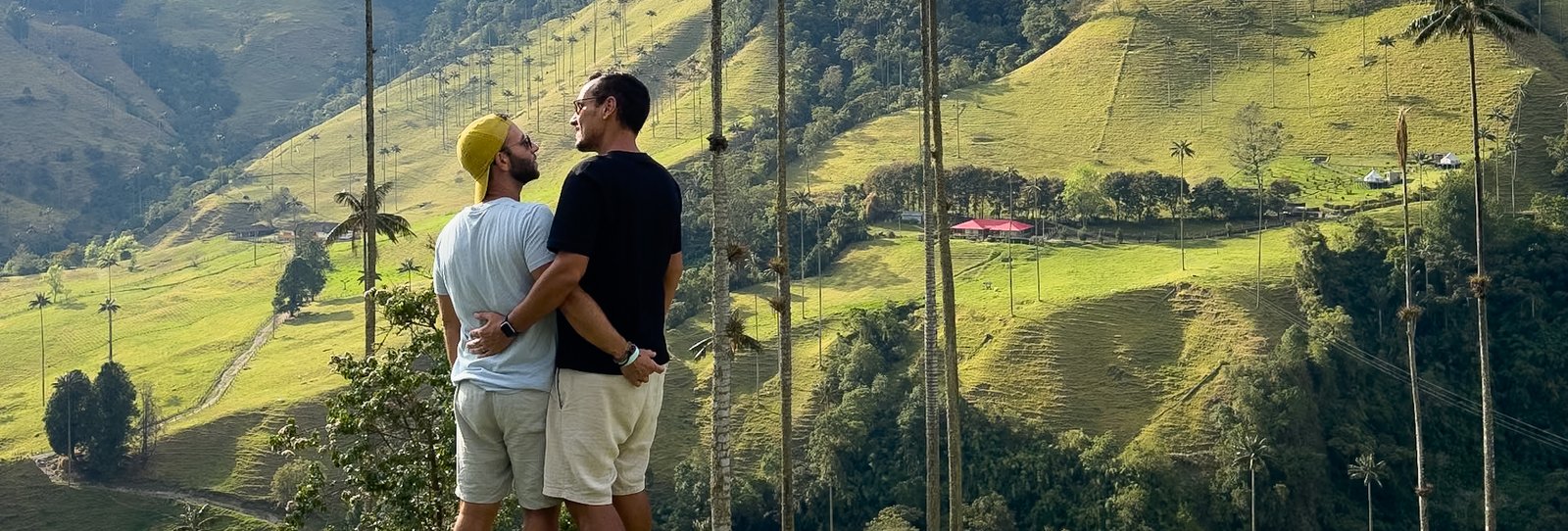Looking for what to do in Nikko? You’ve come to the right place. We’ve had Nikko on our radar for a while. We’d read about the amazing temples, mountain landscapes, and tranquil lakes, but it wasn’t until our third trip to Japan – and during our second round-the-world journey – that we finally managed to fit it into our itinerary. We visited Nikko after passing through Utsunomiya and Sendai, before heading to Tokyo.
We spent two days there and divided our visit into three main areas: the World Heritage temple area (Nikko World Heritage, also called Honchō), Lake Chūzenji, and the area around the town of Nikko. Each has its charm and is worth exploring at a leisurely pace.
Table of Contents
Is the Nikko Pass worth buying?
Before arriving in Nikko, you’ll likely come across the famous Nikko Pass. And the question arises: is it really worth buying?
In our case, we didn’t buy the pass. Since we were coming from Utsunomiya (not Tokyo) and only planned to use the Tobu Railway line on our return to Tokyo, we did the math based on what we wanted to visit… and it wasn’t worth it. We only used the bus once—to go up to Lake Chūzenji—so buying individual tickets ended up being cheaper.
If you have the JR Pass, it’s even simpler: you can travel to Nikko using only JR lines, with a transfer in Utsunomiya, so you won’t need the Nikko Pass or incur extra transportation costs.
But beware: in many cases, the Nikko Pass is worth it—especially if you’re departing from Tokyo or plan to use public transportation frequently in the area. There are two main types:
- Nikko World Heritage Area Pass (valid for 2 days): includes the trip between Asakusa (Tokyo) and Nikko, as well as transportation within the temple and shrine area.
- Nikko All Area Pass (valid for 4 days): in addition to the historic area, it also includes the Lake Chūzenji area, Yumoto Onsen, and other mountain attractions.
Both are available online or at Tobu Railway stations and only make sense if:
- You’re departing from Tokyo (Asakusa);
- You plan to visit both the historic area and the lake/mountain area;
- You intend to use local buses frequently.
You can buy the Nikko Pass online and check updated prices and conditions.
How we divided our visit to Nikko
To make the most of it, we recommend organizing your visit by area. Here’s how we did it:
- Temple Area (Honchō or Nikko World Heritage Area) – Home to famous shrines and temples like Toshogu and Futarasan.
- Lake Chūzenji and Kegon Waterfalls – A stunning natural area, ideal for those who love mountains, lakes, and trails.
- Town of Nikko and surroundings – More relaxed, with cozy cafes, small shops, and accommodations.
2-day itinerary in Nikko: what to see and do
If you’re planning to spend two days in Nikko, here’s our itinerary with everything we did and enjoyed. It’s a perfect city for combining culture, nature, and tranquility—all at a relaxed pace, far from the hustle and bustle of big cities.
Day 1 – Arrival and World Heritage temples
We arrived in Nikko from Utsunomiya in late morning and went straight for lunch. There are plenty of options near the station and on the town’s main street—we ended up eating ramen.
After lunch, we started exploring the town on foot. We walked along the main street toward the temple area, known as the Nikko World Heritage Area or Honchō. The walk there gave us a good first impression of the town, with traditional shops, wooden houses, and that mountain vibe that made us slow down almost without realizing it.
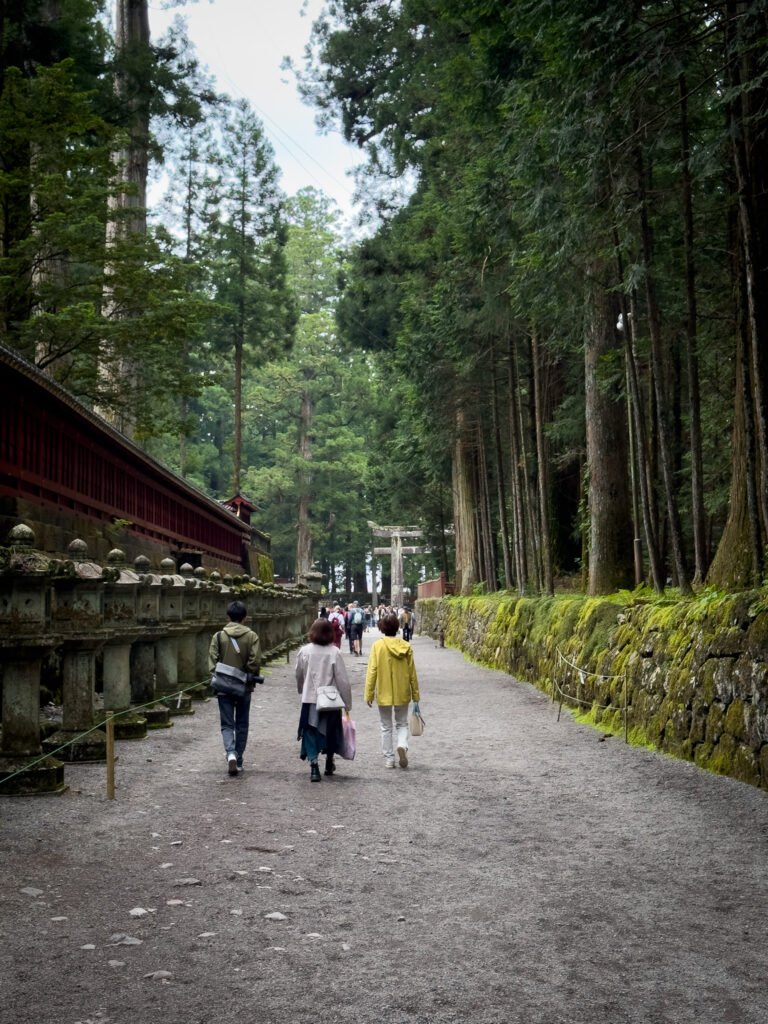
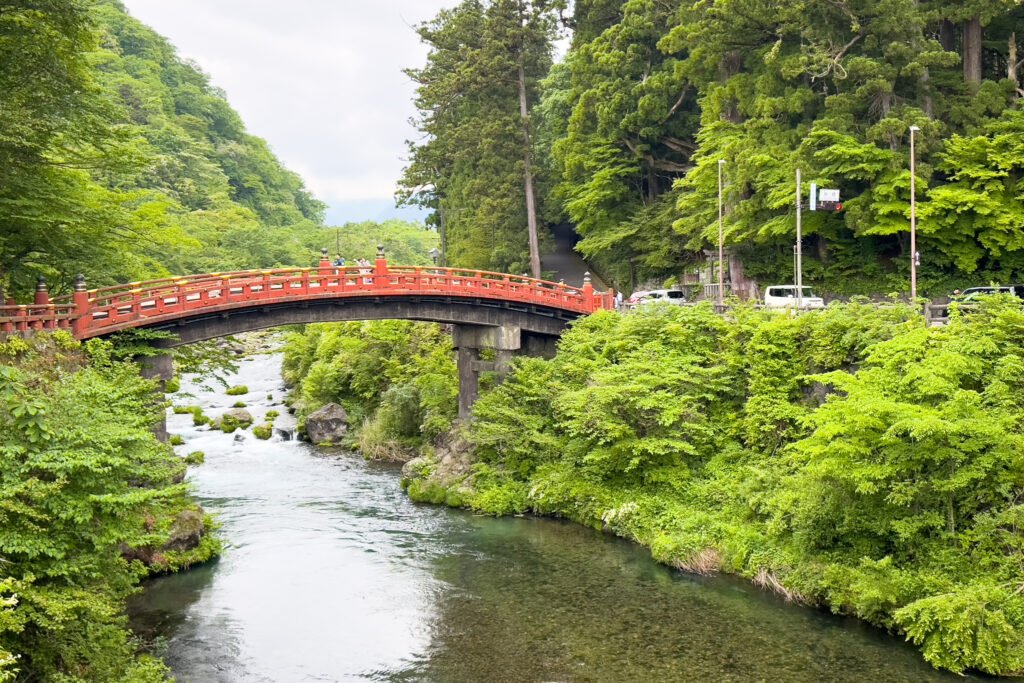
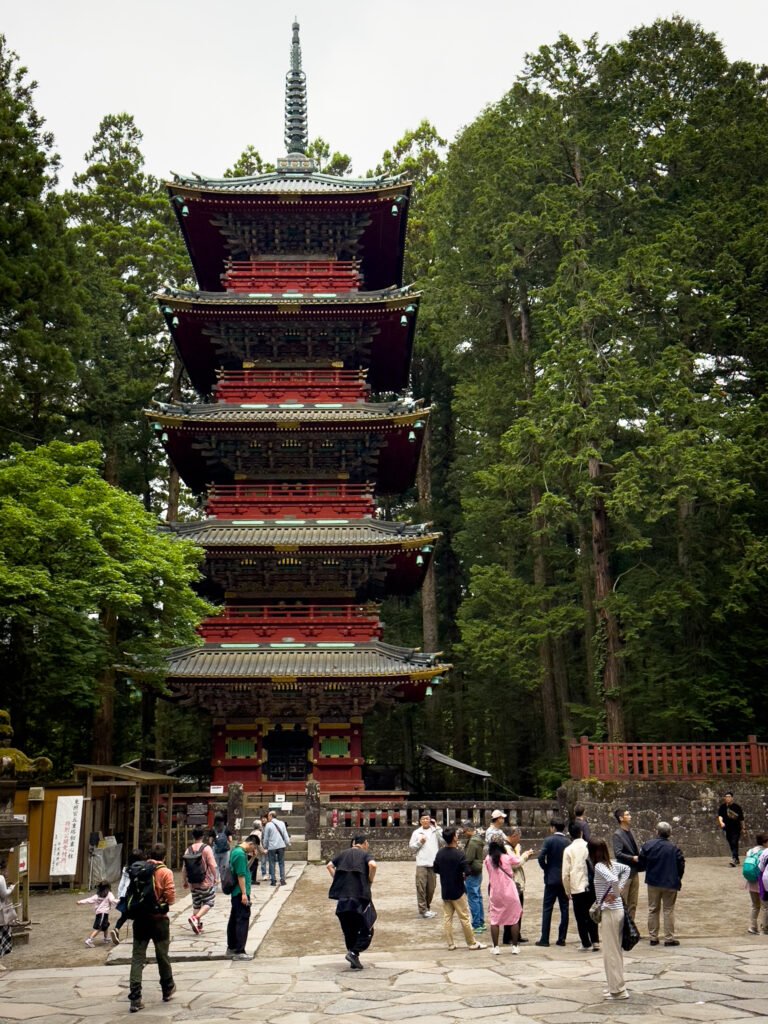
Our first stop was the famous Shinkyō Bridge, one of the most iconic views in Nikko. The red bridge over the river is very photogenic, especially with the forest backdrop. You can cross it, but you need to pay for a ticket—we chose to stay on this side and take photos from the panoramic bridge right next to it, which offers a perfect and free view.
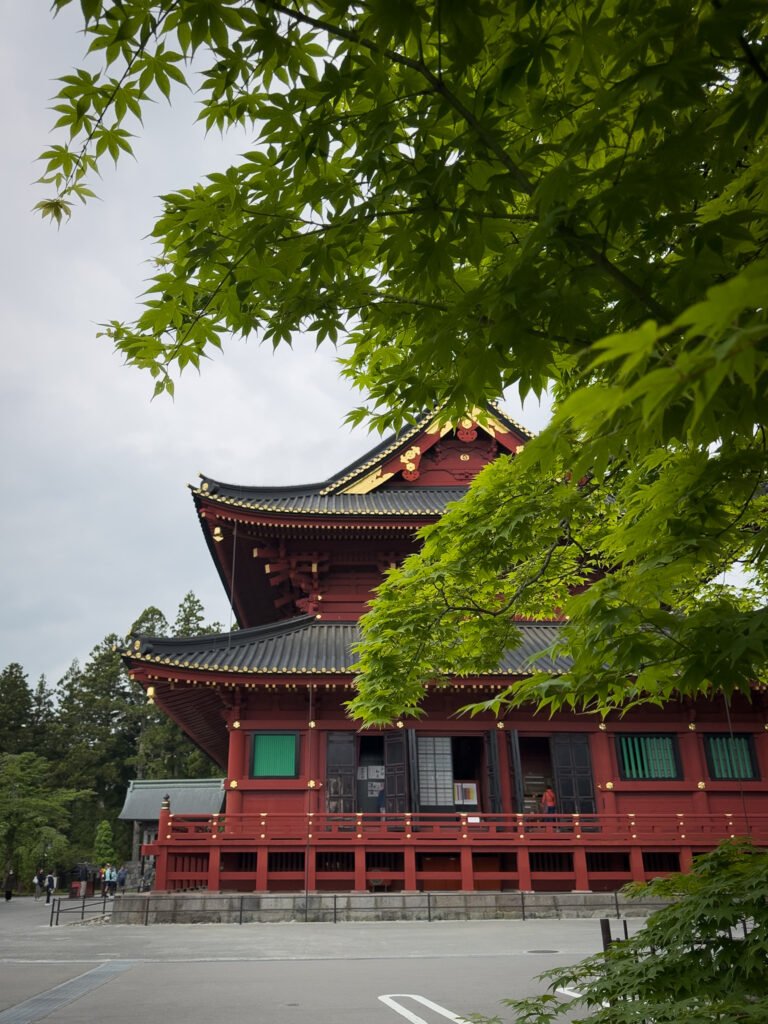
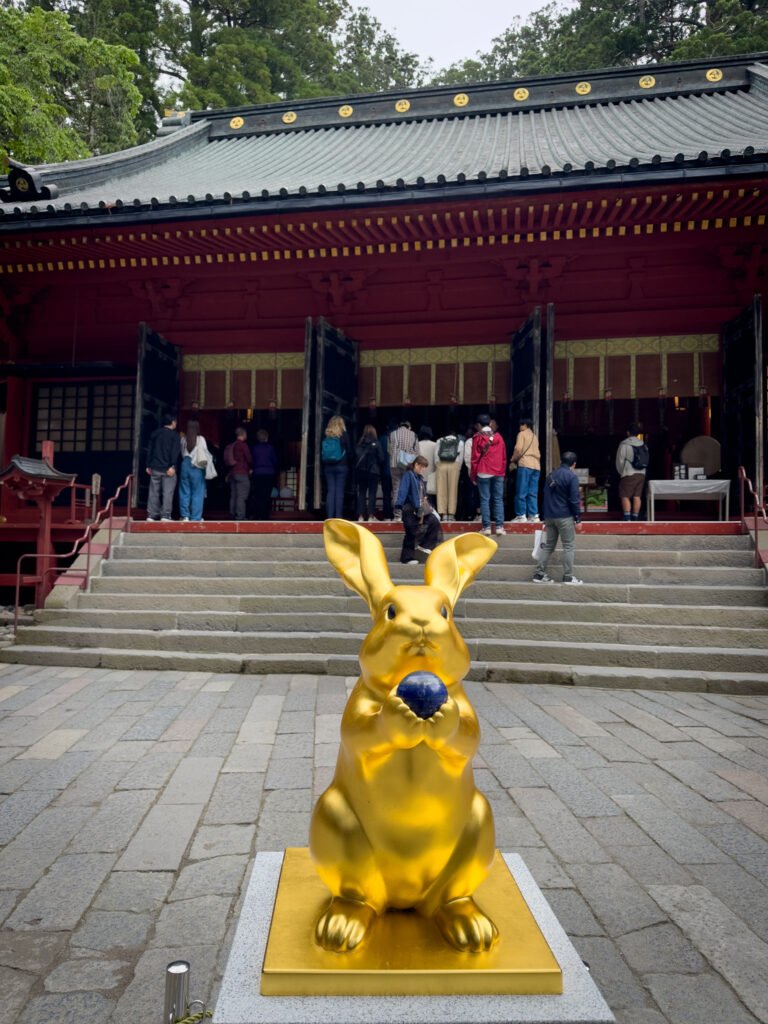
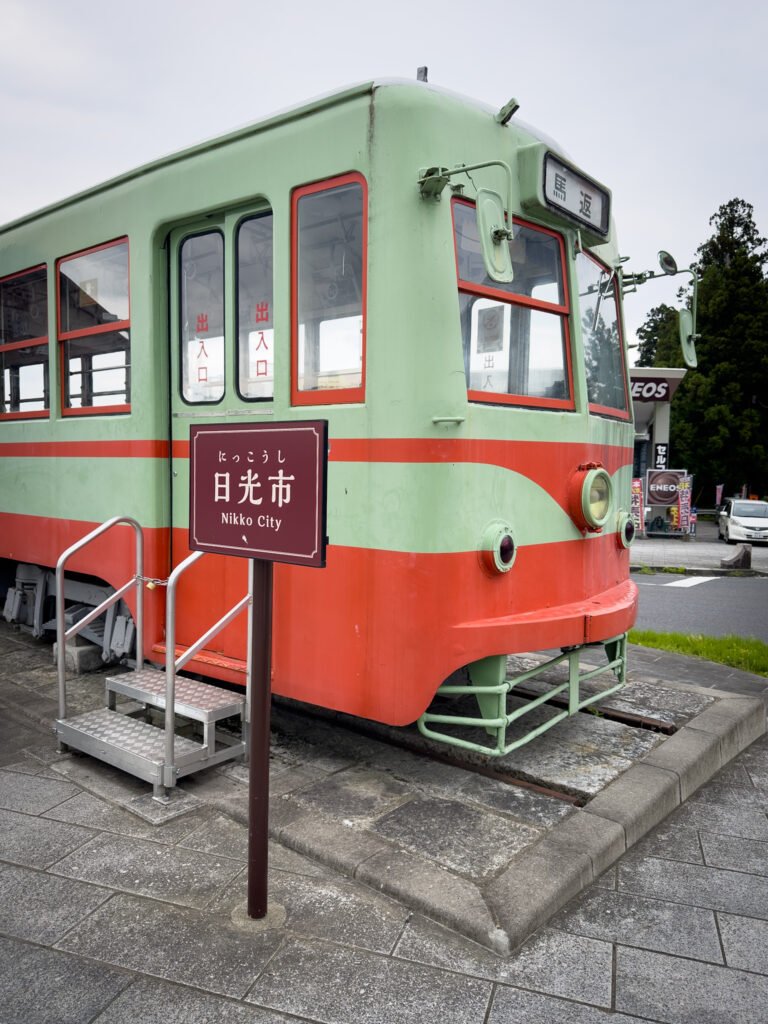
We then headed to the cedar forest where the main temples and shrines of Nikko are located. Even without entering all of them, it’s worth it just to walk around—the atmosphere is magical, with tall trees, humidity in the air, and silence broken only by the sound of birds.
The temples all require individual tickets, but you can walk around the area without a ticket and appreciate the exteriors. If you have to choose, we recommend at least entering Nikkō Tōshogū, the most famous and elaborate of them all.
Main sites in the Nikko World Heritage Area:
- Shinkyō Bridge (panoramic view and/or paid crossing)
- Rinnoji Temple (the oldest Buddhist temple in Nikko)
- Nikkō Tōshogū (mausoleum of shogun Tokugawa Ieyasu, UNESCO World Heritage Site)
- Rin’nōji Taiyū-in (Mausoleum of Iemitsu)
- Takino’o Shrine (a bit further away but very peaceful)
On our way back, before check-in, we stopped to try the famous Nikko puddings—yes, puddings! There are several artisanal bakeries and small cafes selling local puddings made with mountain milk and fresh eggs. A simple but delicious treat.
Finally, we checked into the hotel (see our suggestions for where to stay in Nikko).
Day 2 – Lake Chūzenji and more of historic Nikko
We started our second day in Nikko by taking the bus right in front of the train station (note: bus A is the regular one, while bus E is the express and leaves from further down, near the JR station—but has more limited schedules). The ride itself is an experience, climbing the mountain via the Irohazaka road, famous for its tight curves. If you visit Nikko in the fall, prepare for breathtaking scenery—the leaves turn golden and red, and it’s hard not to stop and stare.

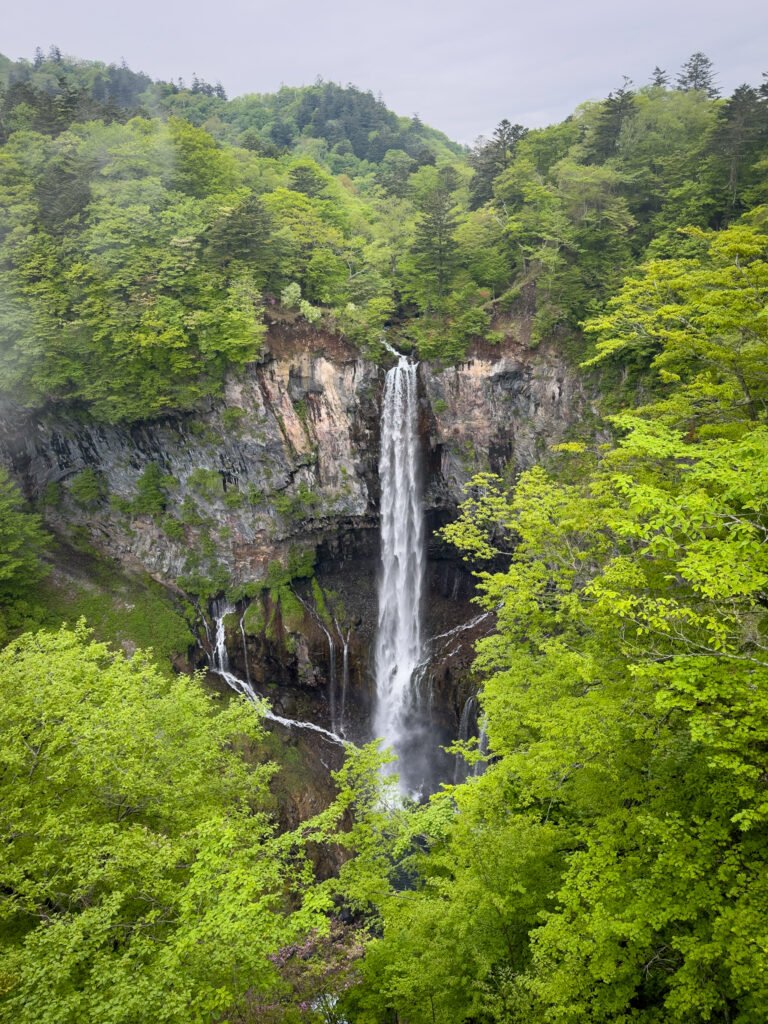
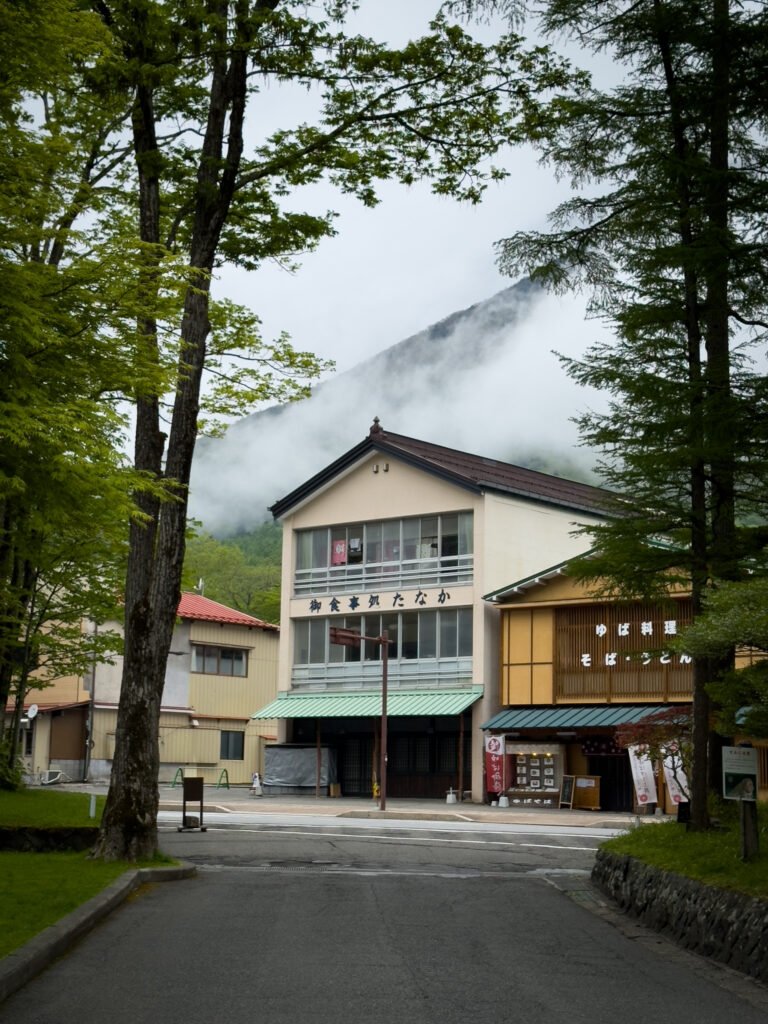
We got off at stop 26, right by Lake Chūzenji, and started by visiting the Kegon Waterfalls, one of the most impressive waterfalls in Japan. There’s a paid elevator that descends to a viewpoint closer to the base of the falls, but we preferred the free viewpoints—they offer an equally spectacular panoramic view.
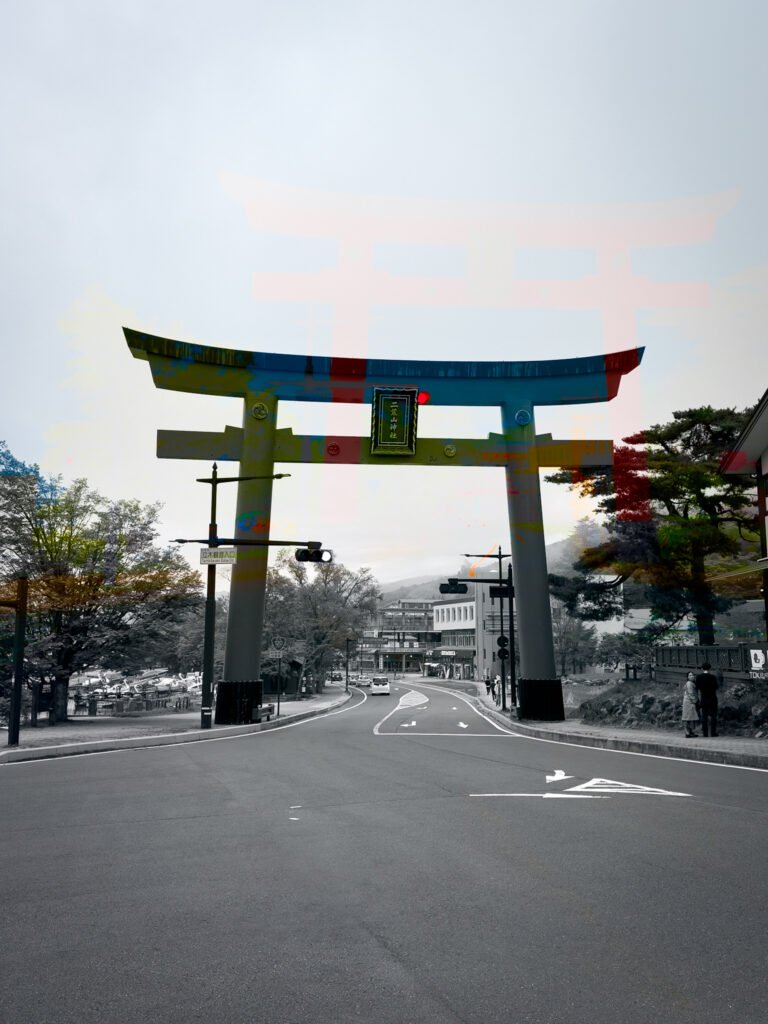

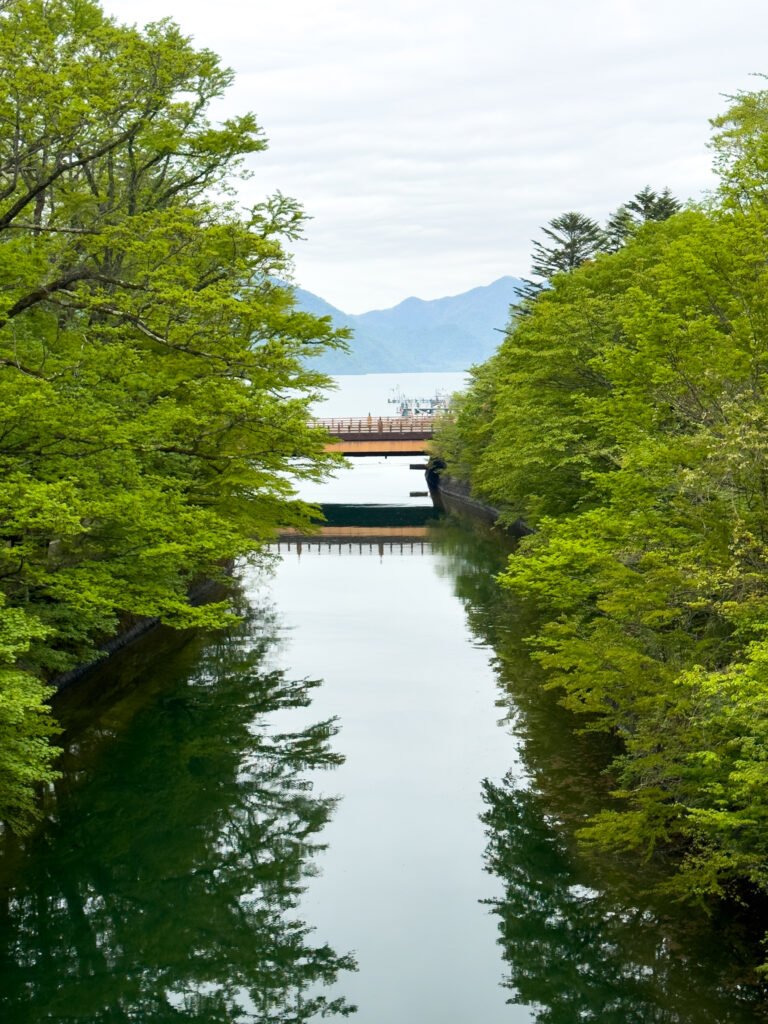
Then, we strolled along Lake Chūzenji. It’s a very peaceful area, perfect for relaxing and enjoying nature. It’s really worth taking a few minutes just to soak in the silence, the lake, and the mountains in the background.
We had lunch at Moon Cafe, a small restaurant serving simple and delicious Japanese dishes with the kind of care you only find in these family-run places. Before heading back to Nikko, we had time for a Japanese crepe at Peaks—one of those sweets that taste even better after a morning of sightseeing.
Back in central Nikko, we had planned to visit the Nikko Tamozawa Imperial Villa Memorial Park—a former residence of the imperial family, surrounded by serene gardens and beautifully preserved. But we ended up changing plans and heading to another recommended spot: the Kanmangafuchi Abyss.

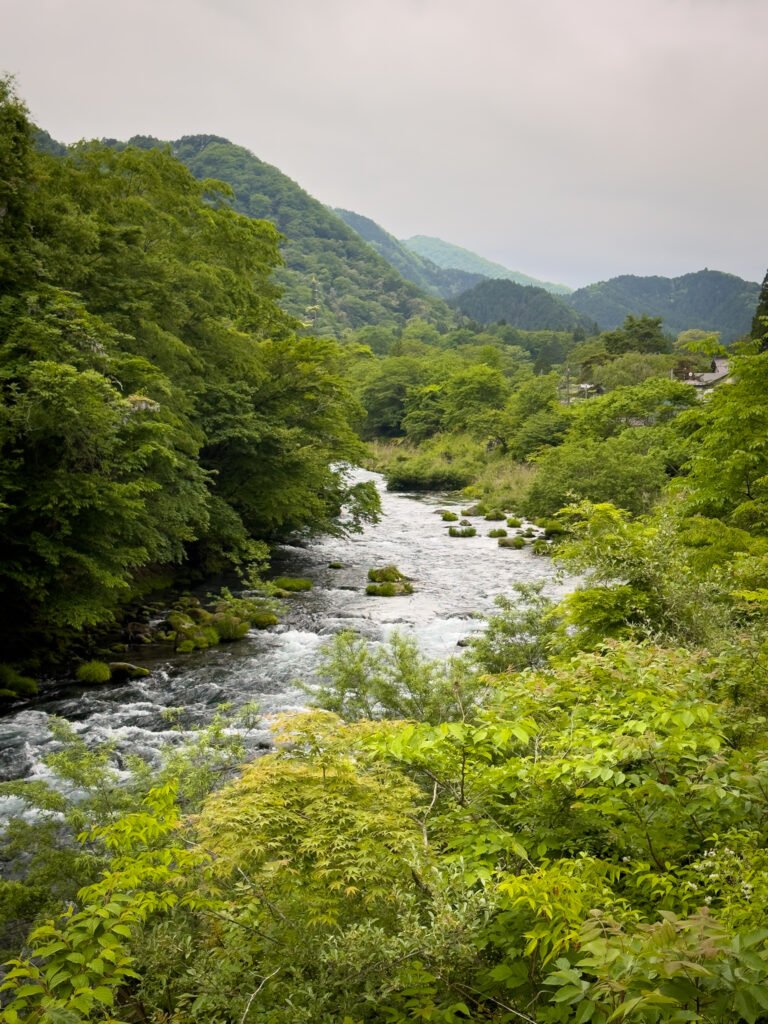
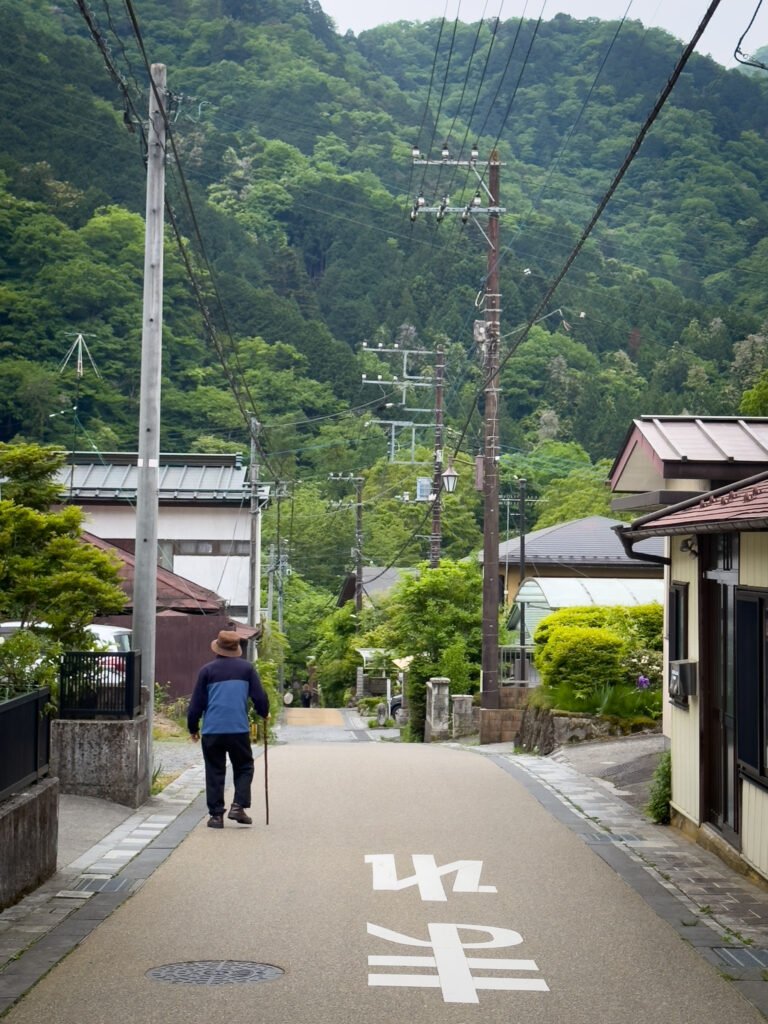
We took the bus there and ended the day with a walk along the river. The trail is lined with dozens of Jizō statues, all wearing red caps and scarves—a powerful and very symbolic image. The surroundings are truly special: greenery everywhere, the constant sound of water, and a calm that’s hard to find in more touristy places.
Where to eat in Nikko
If you’re looking for good places to eat in Nikko, here are some suggestions we tried and recommend:
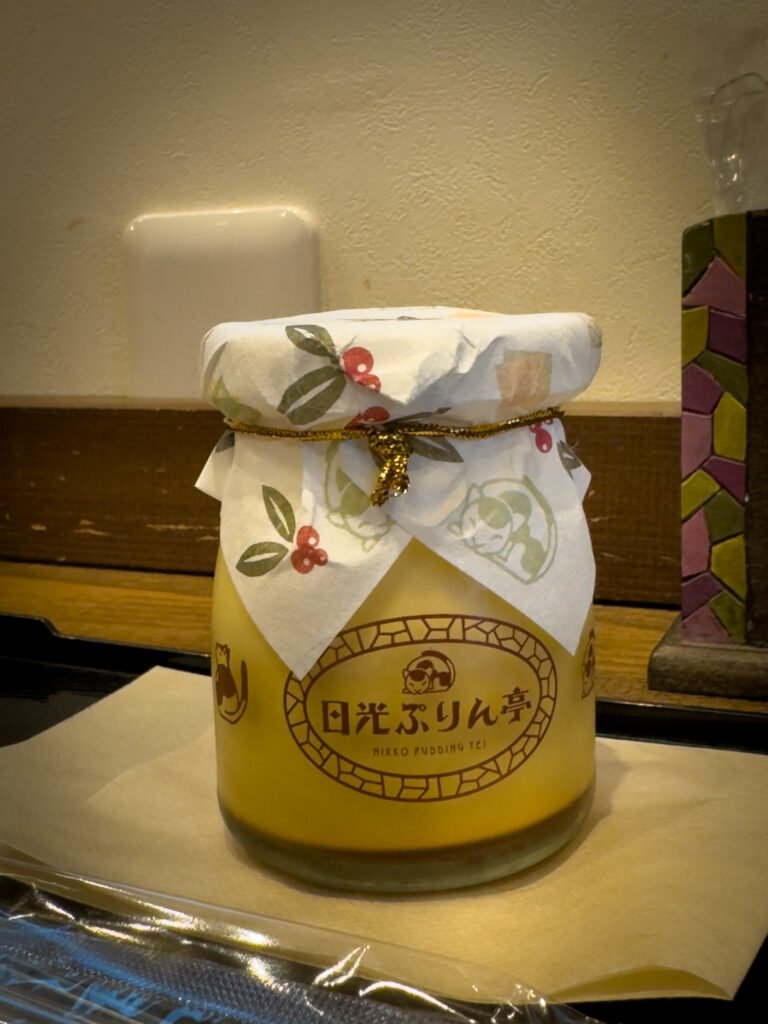
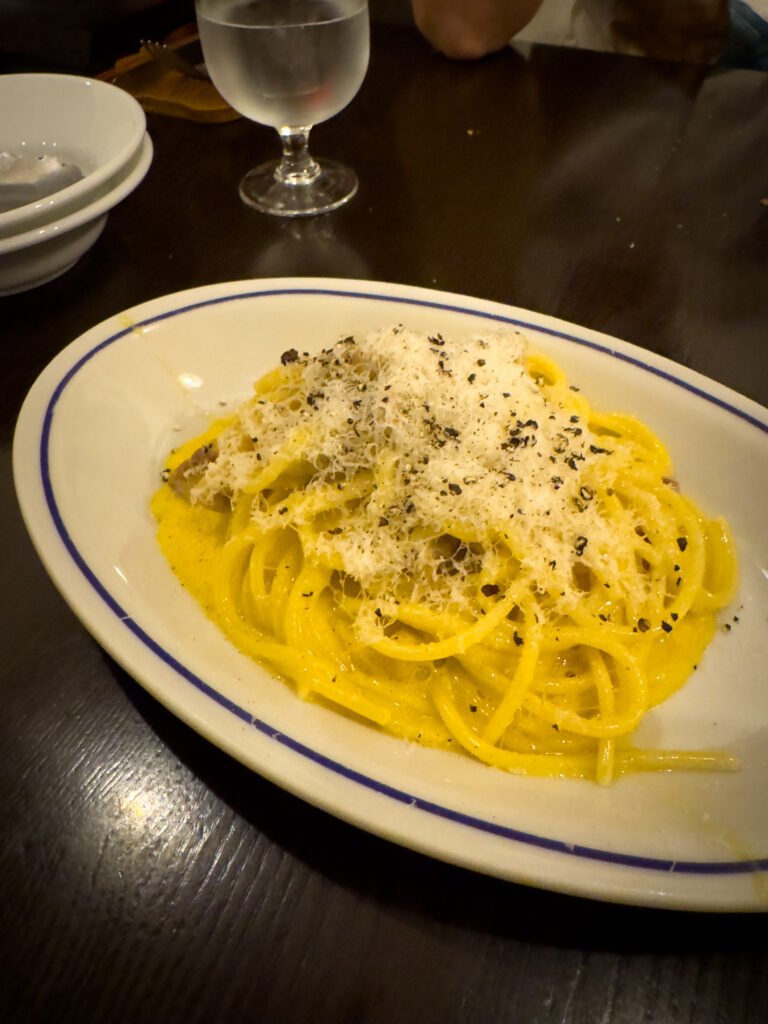

- Ramen Bonten – Various types of ramen, all flavorful, in a traditional and welcoming setting.
- Genuine Izakaya Diner “Uotami” (near Tobu-Nikko Station) – An izakaya with private rooms, ideal for trying typical dishes in a more reserved atmosphere.
- Nikko Pudding Tei (main store) – For dessert lovers, the puddings are irresistible.
- Moon Cafe – Simple and flavorful Japanese comfort food.
- The Peak – Perfect for a sweet (or savory) Japanese crepe in a relaxed space.
- Trattoria Gigli – If you want typical Italian food in a very welcoming environment, this is the right place.
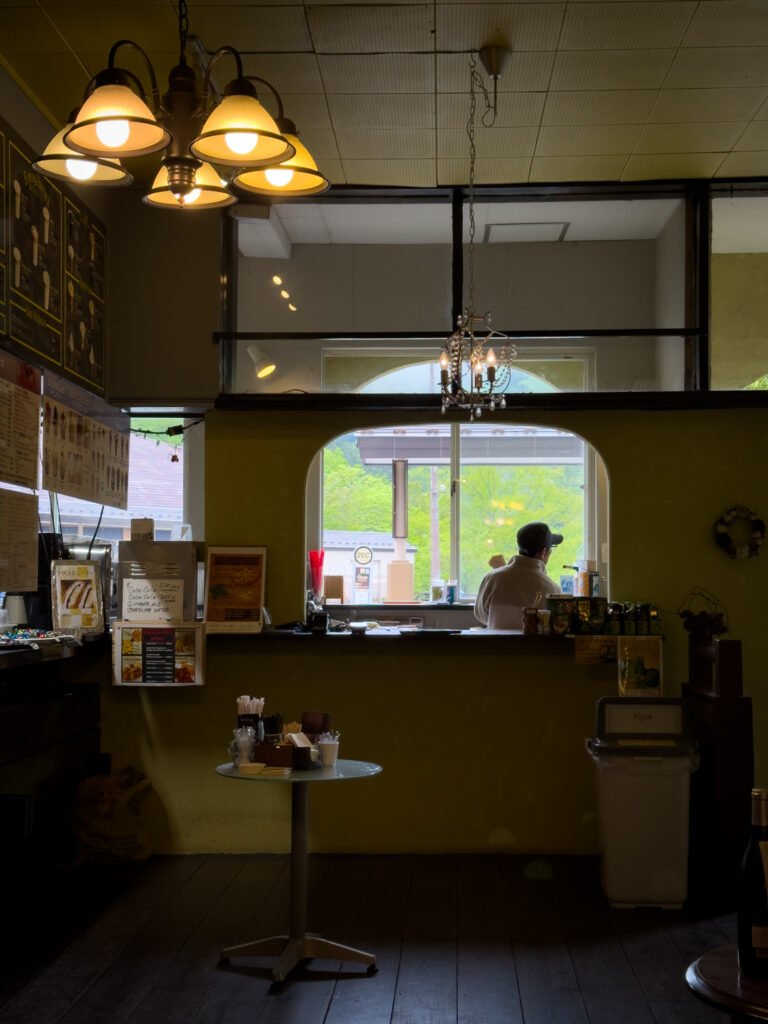
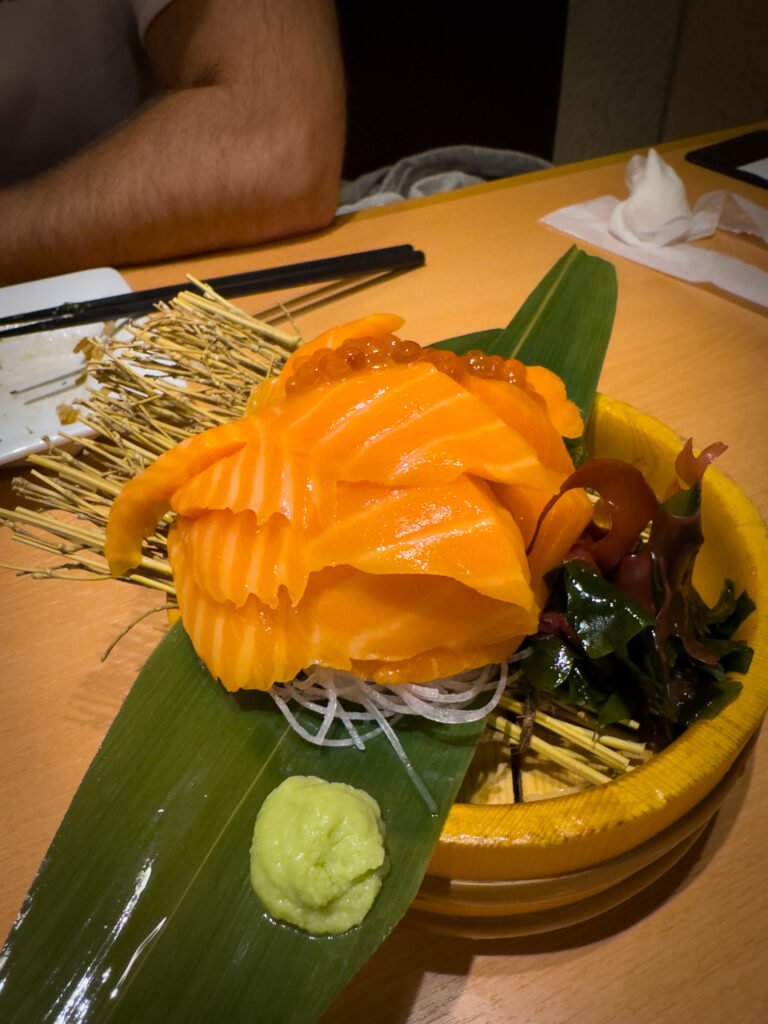
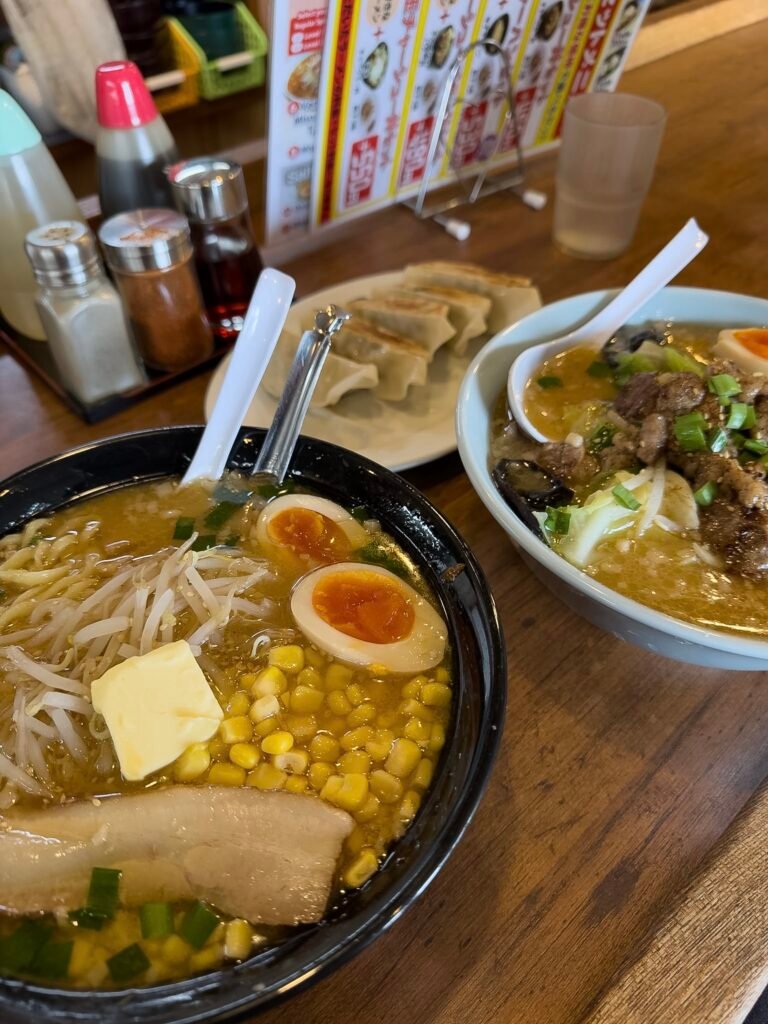
Practical tips for visiting Nikko
- Buy the Nikko Pass online and in advance, especially if you’re departing from Tokyo. This way, you can use the direct train from Asakusa to Nikko without stress and also save on local transportation.
- Bring snacks or plan dinner early. In Nikko, many restaurants close early, so it’s best to secure a meal earlier or buy something before returning to your accommodation—there’s at least one convenience store in central Nikko.
- Dress in layers. Nikko is in a mountainous area, and temperatures can vary greatly throughout the day—even in summer.
- Avoid weekends and Japanese holidays if possible. The town can get crowded, especially around the temples and Lake Chūzenji.
- If you visit in autumn (late October to early November), prepare for crowds but also for one of the best times of the year. The autumn foliage in Nikko is said to be among the most beautiful in Japan.
- Always carry cash. Not all transportation, cafes, or temples accept cards.
Frequently Asked Questions about what to do in Nikko
Is Nikko worth visiting on a trip to Japan?
Yes! Nikko is one of Japan’s most complete destinations, with UNESCO World Heritage temples, stunning nature, and peaceful trails. It’s an excellent getaway from Tokyo, ideal for two days.
Is the Nikko Pass worth it?
It depends on your travel plan. If you’re coming from Tokyo and plan to visit the Lake Chūzenji area, it’s worth it. But if you’re coming from another city or only want to see the temples, it may not justify the price.
How many days do I need to visit Nikko?
We recommend two full days. One to explore the temples and historic center, and another to visit Lake Chūzenji, Kegon Waterfalls, and hike in nature.
When is the best time to visit Nikko?
Autumn is the most sought-after time, with the red leaves transforming the landscape. But spring is also beautiful with cherry blossoms, and winter has snow and fewer tourists.
Do I need accommodation in Nikko or can I do a day trip from Tokyo?
A day trip is possible, but we recommend staying overnight. This way, you have time to explore at a leisurely pace and enjoy the tranquil atmosphere without rushing.



